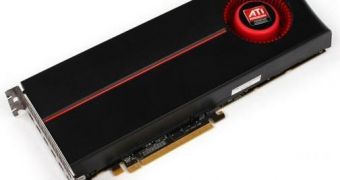Just a short time ago, Advanced Micro Devices published its financial results for the first quarter of 2010 and, after three years of losses, showed that it had finally returned to profitability, at least for now. Of course, since there has been very little AMD activity on the CPU front, this can only mean that the Sunnyvale, California-based company's performance on the GPU market was especially good. Coming to confirm this assumption, and offering some insight into what this performance means for the chip maker, is X-bit Labs, whose report includes a very intriguing bit of information.
AMD's total shipments of DirectX 11-capable graphics processing units, so far, amounts to more than 6 million, according to Dirk Meyer, the chief exec of AMD. End-users should already be starting to realize the kind of position the company is in. Each AMD card sold marks a prospective purchasers lost by NVIDIA, because of delays, since these customers are unlikely to acquire a GTX 400 card now that they already have a tessellation-capable model, even though a bit slower. The implications of this, however, run much deeper than just short-term finances.
Currently, AMD holds the entirety of the DirectX 11 graphics market to itself, since NVIDIA's cards have just (if at all) started shipping. It is also important to note that the ATI Radeon 5000 Series are compatible with OpenCL 1.0 and OpenGL 4.0. Not only that, but AMD even has a dual-GPU monster, as well as the Mobility Radeon HD 5870, which gives even laptops support for the new graphics standard. This makes it more than likely that game developers will optimize their upcoming titles for AMD-based video adapters.
AMD is likely to keep a clear lead for quite a while, given not only its head start but also the fact that NVIDIA won't have dual-GPU and mobile Fermi cards for a while yet.

 14 DAY TRIAL //
14 DAY TRIAL //